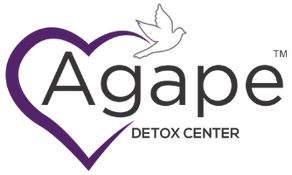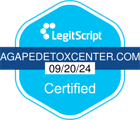Table of Contents
ToggleUnderstanding Addiction and Alcoholism
Addiction and alcoholism are common neurological disorders in the US, affecting over 19 million adults. These conditions cause people to use harmful substances excessively and compulsively, even when the consequences of such use are negative, even catastrophic. Alcohol problems and addiction are progressive; unless they’re treated, they get worse and in time will consume a person’s life completely.
The economic costs of addiction to the nation are tremendous, amounting to 400 billion dollars a year. The financial hardships of alcoholism and addiction to the individual are also astronomical and can easily devour a person’s financial assets, leaving them penniless.
Addiction Can Get Expensive
Drugs of abuse and alcohol are not cheap, and because a person in addiction will use an ever-increasing amount of their substance of choice, the costs only go up. As well, as a person falls further into the grip of addiction, the financial consequences of their substance abuse begin to add up.
Here are some of the typical costs associated with the most commonly abused substances.
Alcohol. Depending on the type of alcohol an alcoholic prefers, costs can run from $4,500 to $10,000 a year or more.
Heroin. Heroin’s price varies by its purity and type but typically costs $150 to $500 per gram. A heroin addict’s daily expenses can easily exceed a thousand dollars a day.
Meth. Crystal methamphetamine, typically called meth, costs about $5 dollars for each use, but meth is incredibly addictive and prompts rapid escalation of a person’s usage. At $20 to $60 dollars a gram, a person with a severe meth addiction would spend from $10,000 to $30,000 a year on methamphetamine.
Painkillers. Opioid painkillers are very addictive and can be purchased on the street, at a high cost. For example, a single oxycodone pill can cost $20, which adds up rapidly as addicts may take many pills every day. A bottle of hydrocodone tablets has a typical street cost of $500 dollars and may last an addict a few days.
Cocaine. Cocaine is one of the most expensive drugs of abuse. A gram of cocaine a day costs a cocaine addict $34,000 dollars over a year’s time, but it’s not uncommon for addicts to use up to 5 grams a day.
What Could Cause An Addict To Go Into Debt?
Addicts go into debt because they direct every cent of their earnings and credit cards towards getting and using their addictive substance of choice. That’s because all addiction, regardless of the substance involved, causes a person to put getting and using their drug of choice at the center of their lives. All other considerations will be pushed aside, including earning wages, paying bills, rent, mortgages, and car payments.
Accruing these kinds of financial losses causes people to go into debt. As well, addiction is so all-consuming people lose their jobs, and their careers, and have no funds to pay bills.
Impact of Addiction and Alcoholism on Credit Scores
Alcoholism and financial hardship usually go hand in hand. The impact of alcoholism and addiction on a person’s finances is devastating. With more and more of a person’s income going towards paying for alcohol or drugs, they are increasingly less able to pay bills. As bills and credit card payments go unpaid, credit scores plummet.
How Alcoholism And Addiction Can Affect Finances & Credit?
Alcoholism and addiction affect finances and credit both directly and indirectly. Direct costs are those associated with the expense of a particular substance or alcohol. These direct costs can add up and become staggering over months or years. As high as they are, they’re usually less burdensome than the indirect costs of addiction.
Indirect costs include expenses associated with the consequences of substance abuse or alcoholism. They include:
- Decreased wages
- Lost jobs
- Credit card debt
- Additional outstanding debts
- Health problems leading to expensive medical care
- Legal problems, such as fines for driving while intoxicated
- Evictions, which make finding a new apartment more difficult
- Loss of one’s home, causing homelessness
- Loss of one’s vehicle, causing increased transportation cost
- Costs of mental health issues arising from substance abuse
Is Financial Recovery Possible After Addiction?
It is possible to make a financial recovery after addiction. It’s not an overnight process, but by making financial responsibility a part of one’s recovery routine, a recovering alcoholic or addict can repair their financial situation.
If you’re ready to move past addiction but don’t know where to start, Agape Detox has a resort-like setting with caring professionals, located in Port St. Lucie, Florida. Our detox center takes a holistic approach to help people reclaim their lives and achieve total wellness.
Agape Detox offers medically supported detox services, inpatient rehab, dual diagnosis treatment for co-occurring disorders, and numerous options in therapy. Our admissions department is ready to help you 24/7, every day of the week. Call us today to get started.
Sources
Facing Addiction in America: The Surgeon General’s Report on Alcohol, Drugs, and Health [. (n.d.). Retrieved July 18, 2022, from https://www.ncbi.nlm.nih.gov/books/NBK424848/
Moeller, K., Munksgaard, R., & Demant, J. (2020, October 9). Illicit drug prices and quantity discounts: A comparison between a cryptomarket, social media, and Police Data. International Journal of Drug Policy. Retrieved July 19, 2022, from https://www.sciencedirect.com/science/article/pii/S0955395920303078
Substance Abuse and Mental Health Services Administration. (2018). National Survey on Drug Use and Health (NSDUH). SAMHSA.gov. Retrieved July 18, 2022, from https://www.samhsa.gov/data/
U.S. Department of Health and Human Services. (n.d.). Understanding alcohol use disorder. National Institute on Alcohol Abuse and Alcoholism. Retrieved July 19, 2022, from https://www.niaaa.nih.gov/publications/brochures-and-fact-sheets/understanding-alcohol-use-disorder

Stephanie Robilio is an accomplished Clinical Director at Agape Behavioral Healthcare. With a Master of Social Work degree, LCSW license, and extensive training in Rapid Resolution Therapy under her belt, she brings a wealth of expertise to her role. Her unique combination of education and experience allows her to provide exceptional care to clients and lead her team with confidence. Stephanie’s joy comes from witnessing the moments when her patients creatively connect the dots and bravely move toward reclaiming their power. Her purpose is to help individuals understand their past so they can create a future full of hope, growth, and success. Stephanie attributes a large portion of her success to the supportive culture and strong sense of community fostered by the Agape team.





